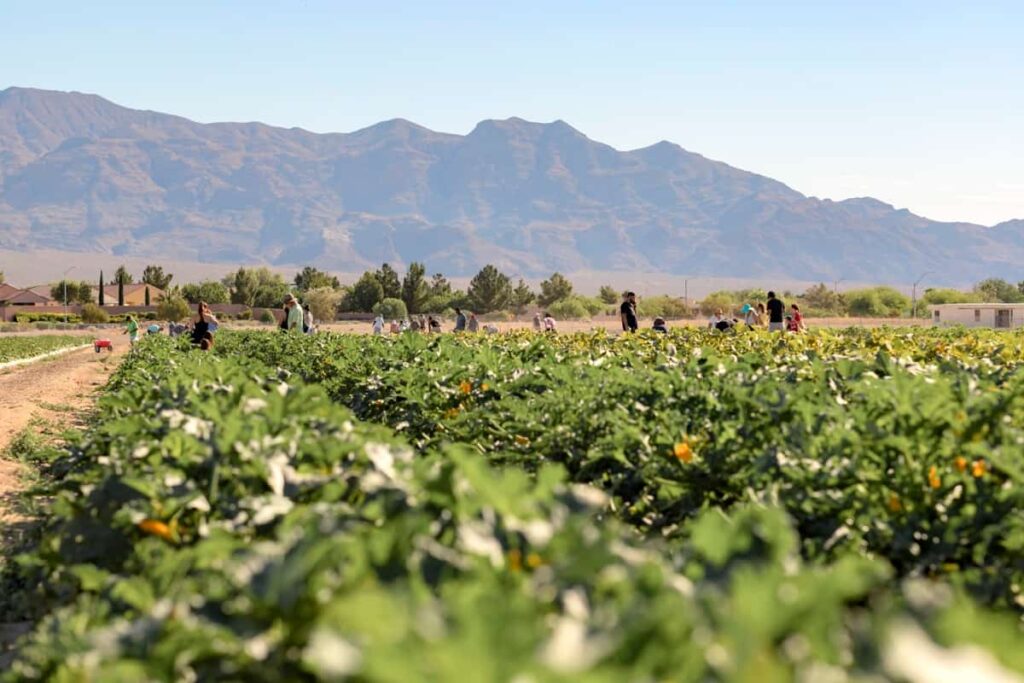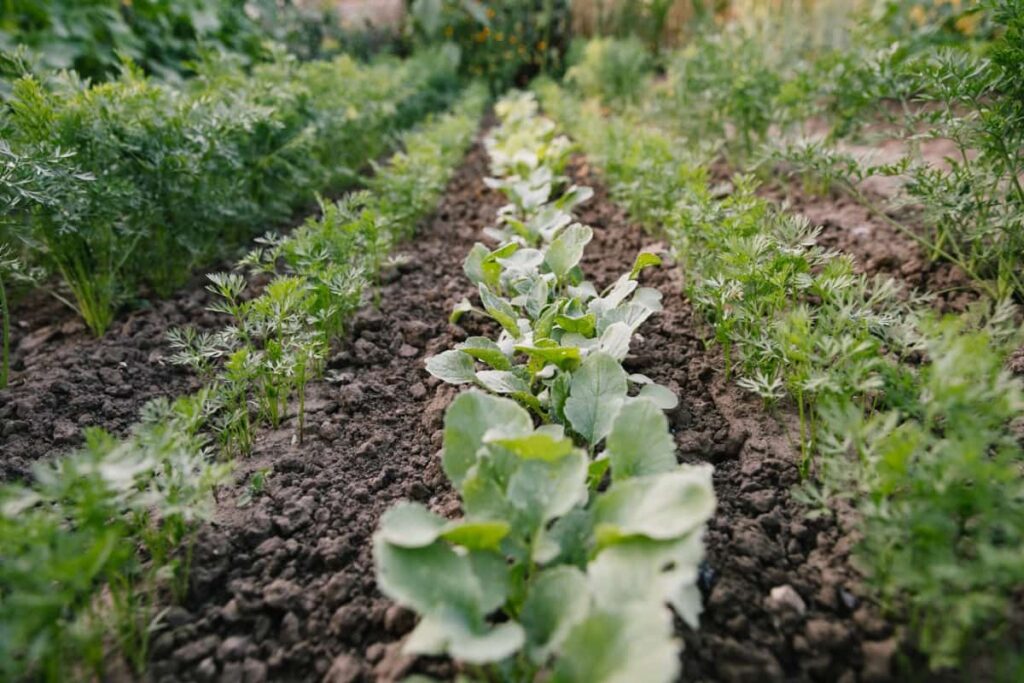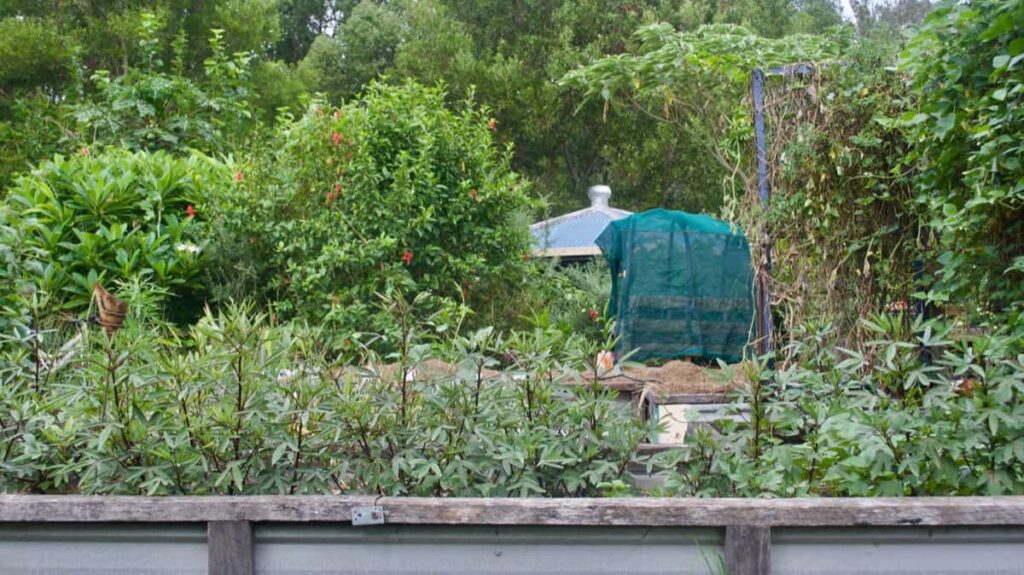Designing a sustainable future means creating environmentally responsible, socially equitable, and economically viable solutions. Permaculture is a design approach that seeks to integrate these three pillars of sustainability into all aspects of our lives, from food production to community development. Crafting an effective permaculture business plan is critical in building a sustainable business that can thrive long-term. A good business plan should include a clear mission statement, detailed market research, financial projections, and strategies for sustainable practices.

Permaculture Business Plan
What is Permaculture?
Permaculture is an approach to land management and settlement design that emulates the patterns and relationships observed in natural ecosystems. It originated from “permanent agriculture” but has evolved to incorporate social and economic aspects, promoting a more holistic and sustainable approach to living. Permaculture applies design principles based on whole-systems thinking, considering all materials and energies involved in a system and their effects on each other.
It aims to create autonomous, regenerative, and productive systems that are in harmony with the environment and support human needs. Permaculture has many branches, including ecological design, engineering, and construction. It encompasses sustainable agriculture, water management, habitat restoration, and urban design. It utilizes a creative design process considering proposed changes’ long-term impacts and interactions.
Need for Permaculture Farming Business
- Permaculture farming uses natural inputs and renewable resources, reducing the reliance on non-renewable resources and promoting environmental sustainability.
- By minimizing synthetic fertilizers, pesticides, and herbicides, permaculture farming helps reduce the environmental impact of conventional agriculture, which is heavily dependent on chemical inputs.
- Permaculture farming is designed to be self-sufficient and low-maintenance, reducing the labor required to maintain it. This, in turn, frees up time for other activities and leads to a more balanced lifestyle.
- Permaculture farming can promote biodiversity by protecting and conserving natural resources and habitats. This can contribute to the overall health of ecosystems, which benefits the planet and its inhabitants.
- Using organic and regenerative practices, the permaculture farming business can produce healthier and more nutritious crops, contributing to better health outcomes for consumers.
- Permaculture farming businesses can create a more resilient and adaptable agricultural system that can better withstand the impacts of climate change, economic uncertainty, and other external factors.
In case you missed it: Building a Sustainable Future: A Comprehensive Guide to Developing Your Ecological Farming Business Plan

Application of Permaculture Uses
- Agriculture: Permaculture principles can be applied in agriculture, including organic farming, agroforestry, and community-supported agriculture. This involves building healthy soil, conserving water, and creating resilient ecosystems.
- Architecture: Permaculture principles can be applied in sustainable architecture using natural materials, passive solar design, and energy-efficient systems. Permaculture design can also be applied in urban planning, creating more sustainable and resilient cities.
- Education: Permaculture principles can be taught in permaculture design courses, workshops, and internships. These programs teach people how to apply permaculture principles in their lives and communities, helping to create a more sustainable future.
- Landscaping: Permaculture principles can be used in designing landscapes and gardens, such as creating food forests, green roofs, and rain gardens. These systems are designed to be productive, low-maintenance, and ecologically sound.
- Community development: Permaculture principles can be applied in community development projects, such as community gardens, eco-villages, and sustainable housing projects. Permaculture design focuses on building strong, self-sufficient, resilient communities that adapt to changing conditions.
- Water management: Permaculture principles can be used in managing water resources, such as creating rainwater harvesting systems, greywater systems, and swales.
- Renewable energy: Permaculture principles can be applied to renewable energy systems, such as solar, wind, and hydropower.
- Waste management: Permaculture principles can be applied in waste management systems, such as composting, vermicomposting, and recycling. Permaculture design focuses on creating closed-loop systems that minimize waste and maximize resources.
Importance of Having a Business Plan for a Permaculture
- Setting goals: A business plan helps you set clear and achievable goals for your permaculture business. It allows you to define your objectives, identify potential challenges and opportunities, and create a roadmap for achieving success.
- Financial planning: A business plan helps you determine the financial requirements of your permaculture business, including startup costs, operating expenses, and revenue projections. It allows you to identify potential funding sources, estimates the return on investment, and manage cash flow.
- Marketing strategy: A business plan helps you define your target market, understand your customers’ needs and preferences, and develop a marketing strategy to reach them. It helps you differentiate your permaculture business from competitors and build brand awareness.
- Operational efficiency: A business plan helps you develop a system for managing your permaculture business, including processes for production, logistics, and customer service. It allows you to identify areas for improvement, streamline operations, and increase efficiency.
- Risk management: A business plan helps you identify potential risks and develop mitigation strategies. It allows you to assess the impact of external factors, such as environmental and economic changes, on your permaculture business and develop contingency plans.
In case you missed it: A Guide to Sustainable RAS Fish Farming Practices

Understanding Permaculture Principles
Permaculture principles are guidelines that can be applied to various systems, including agriculture, landscaping, architecture, community development, and education. Observation is the first principle involving observing and understanding the relationships between different system parts. Boundaries and how they can affect the system’s functioning are also crucial, both physical and conceptual. Resources must be managed sustainably, including people, plants, animals, and funding.
Evaluation integrates the information gathered from observation, boundaries, and resources to prepare for the next steps. The design considers the observed relationships, boundaries, and available resources and attempts to foresee future interrelationships. Implementation involves executing the design, and maintenance involves minor adjustments to keep the permaculture system healthy and functioning over time.
Permaculture Farming Implementation Practices and Techniques
Agroforestry
It is a land-use system that combines the benefits of trees and shrubs with crops or livestock, resulting in a more diverse, productive, and sustainable agricultural system. Forest gardening or food forests, which imitate natural forests, are a popular form of agroforestry. Proponents of forest gardening. Like the Kandyan tree gardens in South and Southeast Asia, tree gardens have been around for hundreds of years and are considered a form of agroforestry.
Urban and Suburban Permaculture
It efficiently utilizes space, particularly in creating community-managed agriculture or farm sites. The key principle of permaculture is to maximize food production while minimizing wasted space. Using keyhole gardens can help address space issues, while collaboration among neighbors, recreation centers, neighborhood associations, city programs, faith groups, and schools can promote green-minded principles.
Hügelkultur
It is an ancient European technique that buries wood to increase soil water retention. The decomposing wood acts like a sponge, absorbing enough water during rainy seasons to sustain crops during dry seasons. Permaculturalists have recently adopted this technique, and it can be implemented in mounds on the ground or raised garden beds. Hügel raised beds imitate natural nutrient cycling found in wood decomposition and improve bed structure and drainage properties.
Vermicomposting
It is a permaculture practice that uses earthworms to break down green and brown waste, producing worm castings that can fertilize the garden. Worms can also help aerate the soil and improve water retention when introduced to garden beds. They can quickly multiply if given ideal conditions, as demonstrated by a permaculture farm in Cuba. Worm castings are especially useful for seed-starting mixes and as regular fertilizer, with reports suggesting they are more effective than conventional compost for seed-starting.
In case you missed it: Sustainable Fish Farming: Zero Waste Fish Farming Practices

Natural Building
It is a construction approach that prioritizes using renewable, minimally processed resources to create healthy living environments while minimizing environmental impact. It employs a range of building systems and materials that align with permaculture principles, including cob, adobe, rammed earth, and straw bale.
These materials are biodegradable, regionally sourced, and often combined to use their thermal and water-resistant properties best. The natural building also emphasizes on-site energy acquisition, water capture, alternate sewage treatment, reuse, and compact, sustainable design. Living roofs, thatch, and wooden shakes or shingles are commonly used for roofing, while rubble trench foundations and dry-stacked or lime-mortared stem walls are popular for the foundation.
Rainwater Harvesting
It involves managing, collecting, and storing rainwater for reuse and providing water for irrigation, livestock, and drinking. It can also increase urban greenery and supplement the water table. Greywater is recycled wastewater from domestic activities like laundry, dishwashing, and bathing and can be used for landscape irrigation and constructed wetlands. Permaculture approaches blackwater involve composting human waste and collecting biogas, which can be used for heating and cooking. Composting toilets or outhouses surrounded by trees can be used instead of plumbed toilets.
Domesticated Animals
These are sustainable ecosystems and are often integrated into the site design. They cycle nutrients, clear fallen fruit, maintain weed and pest control, and spread seeds. Chickens are popular; they can scratch the soil, break down topsoil, and provide manure. Other animals include cows, goats, geese, turkeys, rabbits, and worms.
Mulching
It often uses organic materials, which have multiple benefits such as reducing evaporation, providing nutrients, suppressing weed growth, and moderating temperature. Sheet mulching is a gardening technique that mimics natural forest processes, creating healthy and low-maintenance ecosystems. It works as a nutrient bank, attracting and feeding earthworms and other soil microorganisms and improving soil quality. Sheet mulching can also eliminate unwanted plants by depriving them of light, making it a more environmentally friendly herbicide alternative.
In case you missed it: Sustainable Solutions of Cow Dung Manure: Production Process, Exploring the Benefits and Applications

Crafting a Permaculture Business Plan
Crafting a permaculture business plan is essential in creating a successful and sustainable business aligned with permaculture principles. Here is an explanation of each component involved in creating a permaculture business plan:
Identifying Goals and Objectives
The first step in creating a permaculture business plan is to identify the goals and objectives of the business. This includes determining the purpose of the business, the values that will guide decision-making, and the desired outcomes. The goals of permaculture should be specific, measurable, achievable, relevant, and time-bound.
Conducting Market Research and Assessing Competition
Market research involves gathering information about the market, customers, and competitors to understand better the industry and the potential demand for the products or services offered. This includes analyzing consumer trends, identifying market gaps, and assessing competitors’ strengths and weaknesses. A permaculture business can identify its unique value proposition and differentiate itself from competitors by conducting thorough market research.
Defining Products and Services
Defining the products and services the business offers is crucial in creating a permaculture business plan. This involves identifying the types of products or services offered, determining the quality standards, and outlining the production process. The products and services should be aligned with permaculture principles and values.
Creating a Marketing and Sales Strategy
Marketing and sales strategy involves developing a plan to promote the products or services to the target audience. This includes determining the target audience, creating a brand identity, developing marketing materials, and deciding on the sales channels. The marketing and sales strategy should be aligned with permaculture principles, such as promoting sustainable practices and educating customers about the benefits of permaculture.
Developing a Financial Plan
A financial plan is crucial to a permaculture business plan. It involves developing a budget, forecasting financial projections, and identifying funding sources. The financial plan should include a detailed analysis of the costs associated with running the business, including startup costs, operating costs, and potential risks.
Identifying Risks and Contingency Plans
Identifying and developing potential risks is essential to a permaculture business plan. This includes identifying potential risks, such as natural disasters or economic downturns, and creating a mitigation plan. Contingency plans should include strategies for adapting to changing market conditions and maintaining financial stability.
Sustainability and Permaculture
- Permaculture is sustainable, with few external inputs, which removes fossil fuels from the food production system.
- Permaculture utilizes carefully chosen plants, domestic animals, and wildlife for pest control and arranges species in ways that mutually support each other. For example, co-raising cattle and horses in areas with snow can minimize the need for hay.
- Material lifecycles must mimic ecosystems, where waste products of one species become the input of another. Recycling and reusing waste products are ways to achieve this closed cycle.
- Developing a closed cycle where nothing ends up in landfills requires the output of one system to become the input of another. This is necessary for achieving sustainability.
- Permaculture emphasizes the output of one component is the input of another, which has the potential to build close-knit, sustainable communities through garden exchanges and reusing discarded items.
- The biggest challenge for permaculture and sustainability is manpower, as humans must do most of the work, and machines cannot be relied upon to do everything.
In case you missed it: Sustainable Agriculture Practices: Eco-Friendly, Healthy Farming Benefits and Ideas

Conclusion
Designing a sustainable future through permaculture requires a well-crafted business plan that balances environmental, social, and economic goals. Such a plan should consider the site, its resources, its limitations, and the needs and values of the community it serves. With careful planning and implementation, a permaculture business can contribute to a healthier and more resilient planet.
- Crops Grown in Summer Season: Best Choices for Summer Gardening
- Organic Pest Control for Tomato Farming
- How to Maximize Sheep Farming Profit
- Broccoli Varieties: Choosing the Right Cultivars for Your Farm
- How to Raise Pigs in Your Own Backyard: A Comprehensive Guide
- Budget Friendly Sheep Shed Ideas: Cheap and Low-Cost Tips
- How Much Do Cattle Farmers Make: Revenue Streams in Cattle Farming
- Management Pests and Diseases in Your Cotton Field
- Sheep Farming Business Plan for Beginners
- Aquaponic Farming at Home: A Step-By-Step Guide
- Profitable Village Farming Business Ideas in 2024
- High-Yield Aquaculture: Fast-Growing Fish for Farming
- Effective Fish Pond Construction Techniques for Beginners
- Irrigation and Water Management in Pineapple Farming
- Blossom to Harvest: Mastering Flowering and Pollination in Papaya Farming
- Pig Fattening Essentials: From Selection to Sale for Beginners
- Raising Wagyu Cattle: A Complete Guide for Premium Beef Production
- Soil Types and Their Water Holding Capacity
- Optimizing Irrigation Schedules for Coconut Groves for Enhanced Yield
- Espresso Your Garden: Coffee Grounds for Healthier Acid-Loving Plants
- The Best Soil Mix for Snake Plants: How to Mix Your Own Snake Plant Soil
- Green Thumb Success: Expert Tips for Cultivating Greenhouse Beans All Year Round
- Bloom All Year Round: The Ultimate Guide to Indoor Hyacinth Care
- Eco-Friendly Gardening: How to Make Liquid Fertilizer from Kitchen Waste
- Ultimate Guide to Grow Anise in Pots: Explore Seed Propagation to Harvesting
- Guide to Raising Chester White Pigs: Discover Breed Facts to Growth Management
- Mastering the Elegance: The Ultimate Guide to Weeping Cherry Tree Care, Planting, and Maintenance
- Ultimate Guide to Planting Garlic in Grow Bags: Growing Strategies for Beginners
- How to Fix Spider Plant Leaf-Related Problems: Natural and Organic Remedies
- 10 Reasons Why Your Tulsi Plant is Shedding Leaves: Home Remedies and Solutions
- Optimizing Growth and Yield: The Advantages of Palm Bunch Ash Fertilizer
- Utilizing Neem Oil Extract as a Natural Pesticide for Hydrangea
- From Soil to Harvest: Various Ways in Which Farmers Can Use AI Tools
- Steps to Encourage and Induce Citrus Flowers: A Comprehensive Guide
- How to Fix Snake Plant Leaf-Related Issues: Natural and Organic Remedies
- Transform Your Garden into a Fragrant Oasis with Raat Ki Rani (Night Blooming Jasmine)
